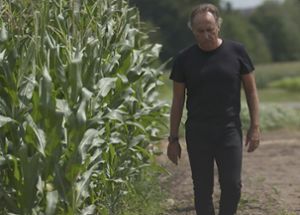Measuring and predicting soil carbon to offset climate change
Swaths of land with soil that no longer can support farming has a new purpose with climate benefits: storing carbon through the Conservation Reserve Program. The CRP pays farmers enrolled in the program to remove depleted land from agricultural production and instead plant crops that will improve soil health by adding nutrients back into the land. Now, an MSU professor will help answer how much carbon is in these unproductive lands now and how much carbon the soil can hold.

Bruno Basso, an ecosystems scientist and MSU Foundation Professor in the Department of Earth and Environmental Sciences in the College of Natural Science, has received a $3.4 million grant from the U.S. Department of Agriculture’s Farm
Service Agency to answer these questions. Basso and his team will sample, measure
and model soil carbon in CRP areas, focusing on the Great Plains, Midwest, Mississippi
River Valley, the Pacific Northwest, Southeast and Northwest. Additional collaborators
on this project include Taylor Lark at the University of Wisconsin, Christopher Mathis
at the University of Arkansas at Pine Bluff, Scott Jackson at Deveron, Will Brinton
at Woods End Laboratories and Matthew Gammans, Andrew Finley and Steve Hamilton at
MSU.
“We need land to continue to produce food for a growing population, but our research
has shown that cultivating unproductive lands causes great environmental impact,”
Basso said. “CRP allows unproductive land to return to native vegetation and hopefully
to increase the amount of carbon to be stored in the soil while reducing greenhouse
gas emissions from agrochemical applications to mitigate climate change.”
Using strategic sampling design based on satellite imagery, Basso and his team of
collaborators from Deveron, an agriculture data collection company based in Toronto,
will identify about 600 sites to sample top and bottom layers of the soil. The samples
will be sent to Woods End Laboratories, where technicians will quantify the pounds
of carbon present in the soil volume.
Basso’s lab will model soil carbon dynamics under different CRP management scenarios
to evaluate the effects on the carbon stored in the soil. The research will continue
over the next five years, and possibly longer, to provide monitoring of soil carbon
in CRP land.
“This is important for looking at potential future climate outcomes,” Basso said.
“This information can help farm managers and policymakers better plan for the future
of our soils and natural resources in general and to use them effectively against
climate change threats.”
Banner image: Bruno Basso and his team will sample, measure and model soil carbon in Conservation Reserve Program areas, focusing on the Great Plains, Midwest, Mississippi River Valley, the Pacific Northwest, Southeast and Northwest. The research will continue over the next five years, and possibly longer, to provide monitoring of soil carbon in CRP land. Credit: USDA